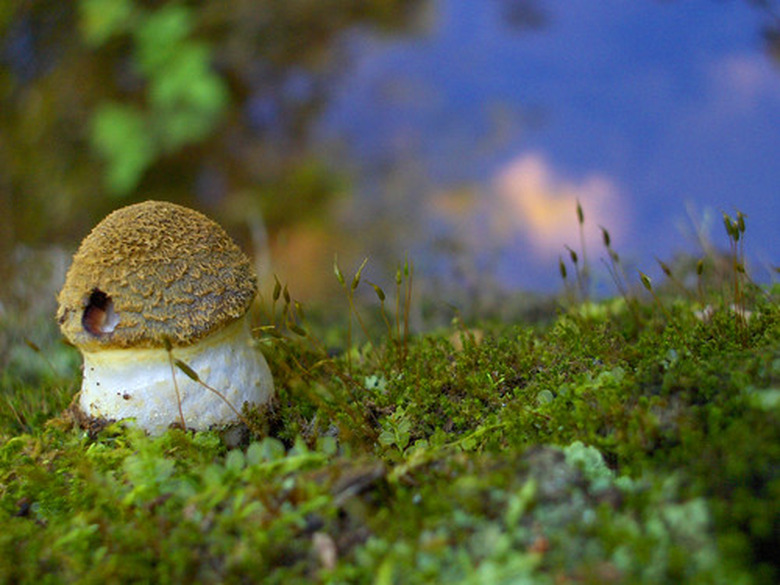Where Does Photosynthesis Occur In Mosses?
Moss, one of the earliest of Earth's land plants, is part of the bryophyte family. Despite appearances, moss actually does have roots, stems, and tiny leaves, more properly called microphylls, which is where photosynthesis occurs.
Definition
Definition
Moss is a non-vascular plant, meaning that it has no internal system to transport water. Instead, it grows by spreading out as ground cover and usually reaches less than 8 inches in height.
Photosynthesis
Photosynthesis
Photosynthesis is the process by which plants make and store their food. With the help of a green substance called chlorophyll, the heat of the sun is combined with carbon dioxide and water and converted to sugar and starch. The process releases oxygen as a waste product.
Microphylls
Microphylls
Rather than true leaves, mosses have microphylls. These leaf-like structures with a single unbranched vein evolved from tiny bits of tissue found on the stems of leafless, more primitive plant forms.
Gametophytes
Gametophytes
The gametophyte is the dominant phase in the life cycle of moss plants. This is the form of the plant most people are familiar with since it is often seen carpeting trees, rocks, and parts of the forest floor. Photosynthesis takes place in the gametophyte phase.
Sporophytes
Sporophytes
Moss reproduces by the creation of spores held within sporophytes. These sporophytes have no photosynthetic capabilities, so they are dependent on the gametophytes for nutrition needs.
Cite This Article
MLA
Wachman, Monica. "Where Does Photosynthesis Occur In Mosses?" sciencing.com, https://www.sciencing.com/photosynthesis-occur-mosses-5764718/. 22 November 2019.
APA
Wachman, Monica. (2019, November 22). Where Does Photosynthesis Occur In Mosses?. sciencing.com. Retrieved from https://www.sciencing.com/photosynthesis-occur-mosses-5764718/
Chicago
Wachman, Monica. Where Does Photosynthesis Occur In Mosses? last modified March 24, 2022. https://www.sciencing.com/photosynthesis-occur-mosses-5764718/
